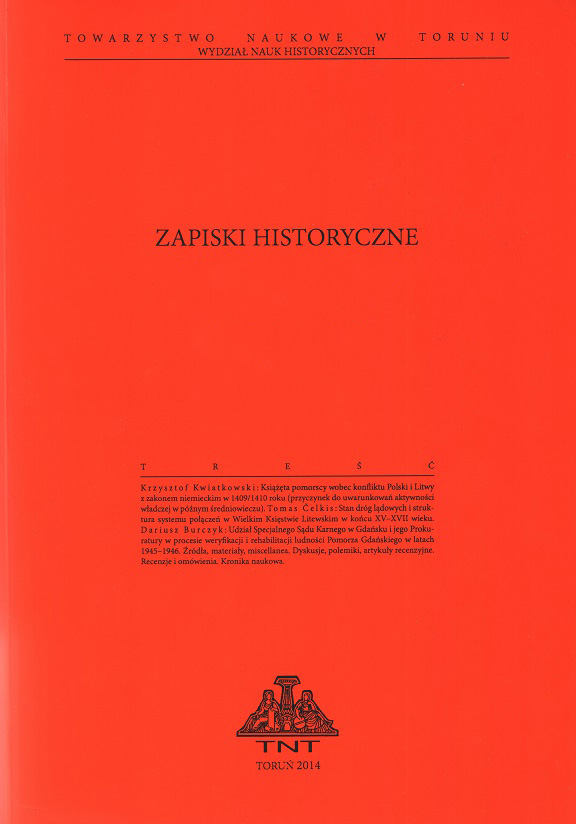A New Order in Central and Eastern Europe
A New Order in Central and Eastern Europe
Polish-Soviet Negotiations and the Peace of Riga (1920–1921)
Author(s): Mariusz WołosSubject(s): Cultural history, Diplomatic history, Military history, Political history, Interwar Period (1920 - 1939), Period(s) of Nation Building, History of Communism
Published by: Towarzystwo Naukowe w Toruniu
Keywords: Treaty of Riga; Treaty of Versailles; Polish-Soviet War; Soviet Russia; Central and Eastern Europe; international relations; diplomacy
Summary/Abstract: The aim of this article is to discuss the current state of research and published sources on the Polish-Soviet negotiations and treaty that put an end to the armed conflict of 1918/1919–1920. It emphasises the significance of the peace treaty signed on 18 March 1921 in Riga for the resetting of relations between countries in Central and Eastern Europe after the First World War. The text puts forward a thesis – widely accepted in Polish historiography but basically overlooked by Western and Russian historians – that the Treaty of Riga constituted the completion and fulfilment of the European order, the most important element of which was the Treaty of Versailles and subsequent peace treaties; therefore, the term ‘Versailles-Riga Order’ is used. It outlines the attitudes of European superpowers and those of the countries of Central and Eastern Europe and of the representatives of the Russian White Movement towards the issues raised during the negotiations in Riga, especially with regards to the shape of the border between the Republic of Poland and Soviet Russia. The article also discusses the objectives, diplomatic tactics and composition of the Polish and Soviet delegations. It points out that the negotiations in Riga were sort of a testing ground for both the Polish and Soviet parties. Moreover, the most important provisions of the peace treaty are discussed from a broad perspective, as well as the methods of their implementation in the following years, namely the issue of establishing the Polish-Soviet border, financial settlements and liabilities, reclaiming cultural heritage, and – last but not least – the repatriation of populations to Poland, Russia and Soviet Ukraine.
Journal: Zapiski Historyczne
- Issue Year: 86/2021
- Issue No: 2
- Page Range: 97-124
- Page Count: 28
- Language: English

